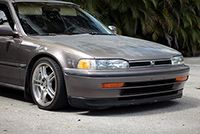f22a1 gaskets for f22a1 IM I would think
If you've got the cams you could use the a6 IM (the plenum is bigger), or just get the H23 if you're going to buy one anyway.
If you've got the cams you could use the a6 IM (the plenum is bigger), or just get the H23 if you're going to buy one anyway.


Comment